聚异氰脲酸酯(PIR),挤出聚苯乙烯(XPS),膨胀聚苯乙烯(EPS)或聚苯乙烯泡沫?
When building or renovating a high-performance building envelopethere are really three main kinds of rigid foam panels you are going to have to choose from- Polyisocyanurate known as Polyiso (PIR), Extruded Polystyrene (XPS) - often called Styrofoam - and Expanded Polystyrene (EPS).
Before choosing, you should know exactly what you expect these foam insulation panels to do, to make sure you buy and benefit from the right one. These three products we're comparing here are all petroleum-based, but their characteristics, performance and ecological impacts vary significantly. Alternatively, depending on application and budget, you could always choosenatural Green Insulation Products, Like Hemp Insulation panels or Batt Insulationormineral wool - demonstrated here in roof insulation.
Polyisocyanurate Foam Panels:
PIR, polyiso, or ISO, is a thermoset plastic product typically produced as a foamand used as rigid thermal insulation panel - most often with aluminum foil facing. Thermal performance is rated at R6-6.5 per inch, but don't count on that if your winters are cold for the reasons we're about to explain. Most insulation products actually perform a bit better the colder it gets but polyisocyanurate breaks that rule. As of about 15°C its performance starts to deteriorate, and badly. By the time you get down to the -20s Celsius it's nowhere near that. It can be a great product to use as long as you keep it warm, which is a really odd thing to say about an insulation product.

Polyiso的R值在你最需要它的时候逐渐消失的消息还没有完全渗透到建筑行业,所以你仍然看到它在寒冷的气候中偶尔被安装在外墙上。在严冬,它几乎不能提供你认为它会提供的热保护,而且由于它缺乏透气性,它可能会造成水分损害。
Polyiso保温板是应用最广泛的低坡、甲板上商业屋面保温材料。作为商业屋面应用的通用选择,polyiso被设计为任何改性沥青,组合,或单层屋面系统的一部分。Polyiso产品的特点是高强度和热拖布和粘合剂连接方法的优良吸收因素。The product also is designed to perform well with mechanical fasteners, possibly underGreen Roof membranes.
Polyiso Foam Panel Insulation Conclusion:实际上,如果你的冬季温度低于50°F或10°C,使用聚苯乙烯泡沫隔热板可能是一个糟糕的选择。为了更好地理解这一说法,研究人员对芝加哥的一面墙或屋顶进行了整个12月的测试,然后平均下来。在这项研究中,使用2“聚异氰尿酸酯泡沫板的第一个组件与使用2”EPS泡沫板的相同组件进行了比较,发现损失了30%以上的热量(见下文)!
XPS - Extruded Polystyrene Foam Panels - The blue, pink or green ones (eg. Styrofoam):
XPS is Rated at R5 per inch, but it will off-gas and lose some insulation performance over time -especially below-grade and when tested in real-world applications. Above grade XPS foam acts as avapour retarder(and becomes even less moisture permeable the thicker it is - 1 inch is about 1 perm, 2 inches about .5 perms); when taped it can act as an air barrier; the manufacturers and standardized testing state that it does not absorb moisture, nor is it affected adversely by it. However, with some of the EcoHome team having real world experience to the contrary, we "dug-deeper" and found that many contractors have also noticed potential issues with XPS foam boards retaining moisture, backed up byreports like thisciting a large source of correlated testing and which would lead us to conclude thatXPS rigid insulation panels should be avoided for below-grade applications likebasement insulation——这与外面的很多信息相反。

注:1烫和60纳克是美国和加拿大的等效透气率,低于该透气率的材料被归类为II型缓气剂,适用于住宅建筑。
此外,对于传统生产的XPS来说,更令人遗憾的是,最常用的发泡剂氢氟碳化合物(HFCs)对气候的损害远远大于其他硬质泡沫保温板。Some manufacturers speak of a transition to moreeco-friendly foam insulationblowing agents; that will be great news when it happens across the board! And credit where it's due, the "real" Styrofoam, as in the DOW Chemicals blue product, is now manufactured with HCFC blowing agents which have 94% less ozone depletion potential. As HFCs have a global warming potential (GWP) that is 1430 times worse than carbon, this really does demonstrate how important it is to choose rigid foam insulation boards very carefuly to reduce their environmental impact.All XPS panels are not equal!
EPS - Expanded Polystyrene Foam Insulation Boards:
Rated at R4 per inch; EPS foam insulation boards are more permeable to air and moisture than XPS, but it doesn't retain moisture to the same extent because of it's more closed cell structure and it's breathability which lets it dry out. Two inches of EPS foam board has a moisture permeability rate of between 60 and 75 ng (1 to1.25 perms), which is on the cusp of qualifying it as a type II vapour retarder, but on the more 'breathable' side of the scale which we would probably consider a good thing in most applications.

For reference sake, the traditional 6mil polyethylene vapour barrier has a permeability rating of 3.4 ng, making it about 18 times more vapour resistant than building codes allow.
The permeability of EPS can be handy at times if you want to add insulation to an existing wall assembly but are worried about trapping moisture, like retrofitting the exterior of buildings with additional insulation. Though to be absolutely sure you may be better with a mineral wool board which lets moisture pass right through - it all depends what moisture barriers are already in place or ar about to be installed.
The lower stated R value of EPS compared to XPS is in a way compensated for by having a higher R value per dollar, as it is somewhat cheaper. If you're not worried about losing an inch of space here or there, you'll get a higher R value with EPS for the same amount of money, albeit with a thicker wall, and this R-Value also stays pretty consistent over time - unlike XPS which tails off as it ages.
The performance of EPS may drop slightly when it's wet (reports I've seen indicate somewhere in the area of 10-15 %, so nothing too catastrophic), it will also dry out just as quickly as it got wet and return to its original performance. But there is nothing wrong with putting a little effort into keeping it dry if you can. The GWP of expanded polystyrene blowing agents is about 7 times worse than carbon, but that's a lot less than being 1430 times worse like standard XPS is. There is also the potential for a miniscule amount of off-gasing of some chemicals including potentially troublesome brominated fire-retardants from EPS foam products used in construction, but speculation as to whether or not this poses a significant risk to health doesn't seem to be based on any hard facts or testing. We'd be really interested to find any verifiable sources for EPS chemical off-gassing testing - if you find any please post them to the comments section below - as we are starting to think that EPS foam may arguably bethe most Eco-Friendly insulation这可能会动摇我们反对它的想法。
Additional considerations with Polyisocyanurate:
Polyisocyanurate foam insulation panels come with a layer of foil on each side为了保持气体在里面,所以有可能解决一点日益增长的问题在墙壁组装耐久性。箔是一个蒸汽屏障和一个非常好的,它事实上它阻止甚至比正常使用的6毫米聚乙烯更多的水分。So if you use it on the interior of ahigh performance stud wall design, you won't need to add an additional vapour barrier.
这是有趣的部分——因为面板的两边都有箔纸,你最终得到的是无害的第二层蒸汽屏障,这在建筑设计中通常是异端邪说。但在炎热潮湿的夏季,由于空调的作用,蒸汽驱动有逆转的风险,这可以帮助解决这个问题。Any inward-bound moisture would be stopped at that inner layer of foil, which will be warmer than the foil on the other side, so you reduce yourrisk of summertime condensation.
That foil is the reason it can be problematic on the exterior, as you would be adding an exterior vapour barrier where you likely don't want one.
On the good news side, the GWP of blowing agents in Polyiso is similar to those in EPS, and in the right circumstances its R value is significantly higher, which deservedly or not helped earn it the reputation of being the 'greenest' foam. It can be a great choice when kept above freezing and away from moisture - so above grade for sure, and it makes a great interiorthermal breakwhen it's kept a bit warmer by batt insulation in stud cavities.
以石油为基础的泡沫不应该仅仅因为原则而受到环保建筑商的谴责;应该正确地看待它。还有其他类型的绝缘护套(矿棉、木纤维和玻璃纤维仅举三例),每一种都有自己的优点、缺点、碳足迹和通过制造而产生的隐含能源,所以即使是最环保的产品也会产生一些可衡量的影响。节约能源需要能源,而制造绝缘材料可以说是我们目前用化石燃料做的更高尚的事情之一。If you really want to go into depth about the tested performance values of Polyiso Foam panels in hot and cold clinates compared to EPS and XPS foam Insulation panels - see thearticle from Building Science Corporation here
An Alternative to Foam: Mineral wool / Rock wool rigid insulation panels:
The only rigid board insulation that is not a petroleum-based foam productshown in the main photo above is the brown one, which is mineral wool. It is a recycled product made with the stone dust from industrial blast furnaces.

Like any particulate, it is best not to inhale the fibers while installing rock wool insulation board, so like any batt insulation we recommend using eye protection and a mask, not to mention gloves to prevent skin irritation. As an insulation it is non-toxic, and unlike foam products there are no blowing agents that will off-gas into your home. That means it can lead to cleaner indoor air quality, and the R value will never change, whereas foam products will deteriorate over time as the gases escape.
Mineral wool is rated at about R 4, it is unharmed by moisture, it is not a vapour barrier at any thickness, nor is it an air barrier. It also provides better soundproofing, and being made with stone, it is fireproof.
Not being affected by moisture makes it is a great choice forretro-fitting insulation when finishing basement, either interior or exterior. It is also something of a fool proof exterior board insulation when renovating, as it will not trap moisture from the interior inside the wall.
In batt form is it a common alternative to fiberglass for its higher R value, and easier installation (at least for doing a good job) It does however cost more than fiberglass per batt.
In conclusion - Which rigid insulation panel is best?:
Our personal overall preference due to its recycled content and versatile applications is probably mineral wool, but as for the petroleum plastic rigid foam insulation products - polyisocyanurate gets top marks for being 'eco' if you are in a warmer climate and can handle its moody disposition. EPS foam is versatile, great for below-grade applications and in the middle ground for performance, financial and ecological cost, and whilst XPS foam is a top performer on paper it comes with some unfortunate environmental baggage for which we'd probably rate it in last place. As soon as XPS completes its transition to less harmful blowing agents, I'm sure it will be welcomed into thegreen buildingcommunity for above-grade applications.
For Additional Information on Insulation & Building High-Performance Walls:
Be sure to read theEcoHome Guide to High Performance wall construction here
And watch theVideo Guide to high performance wall construction and insulation here


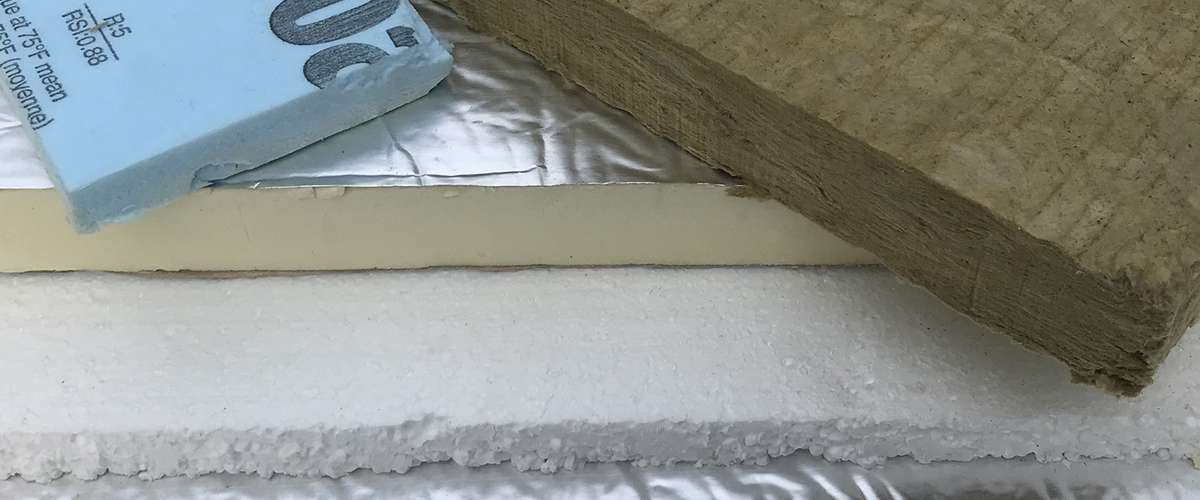















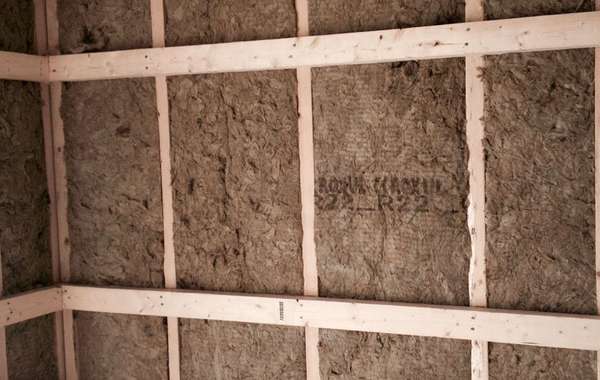
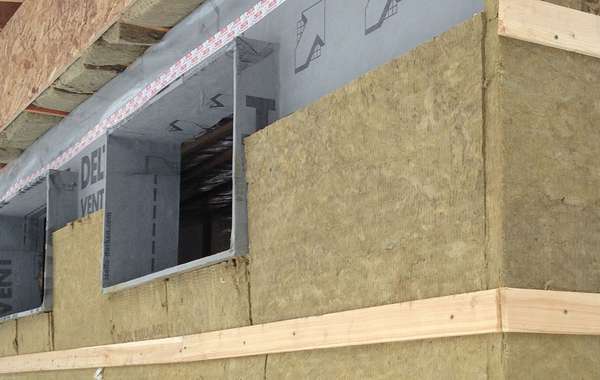
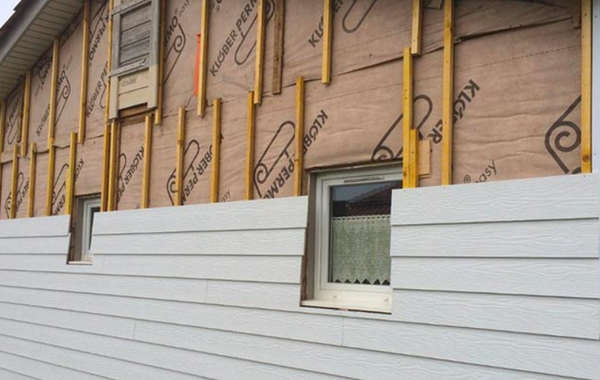
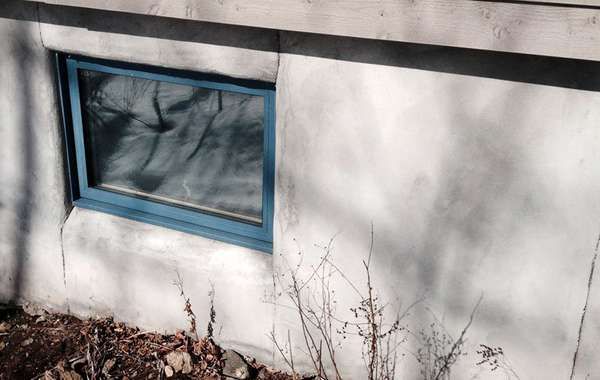
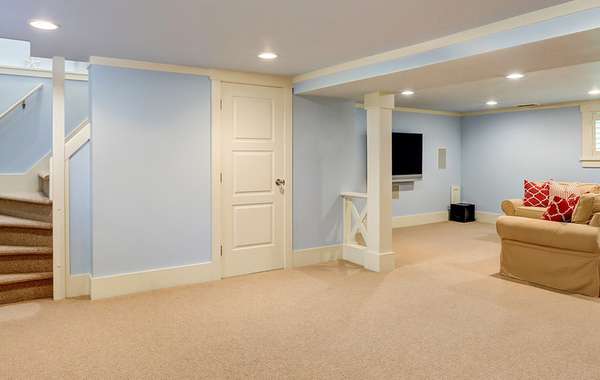
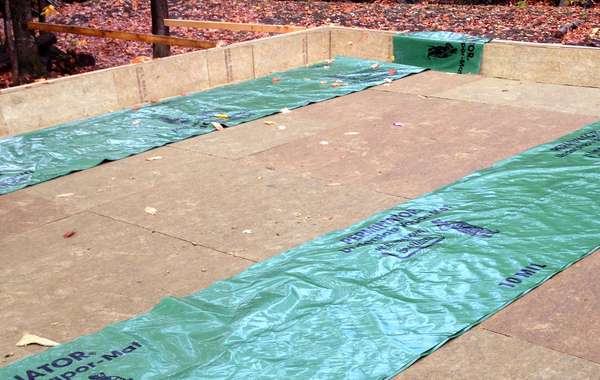
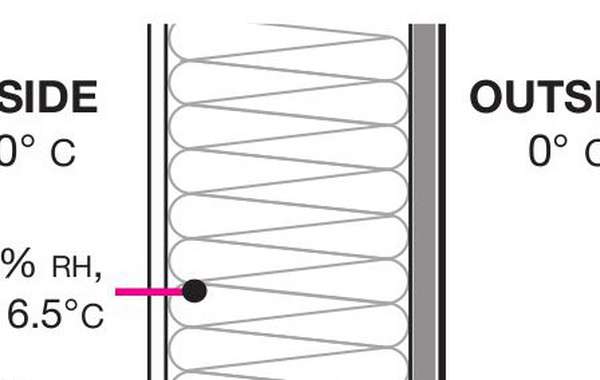
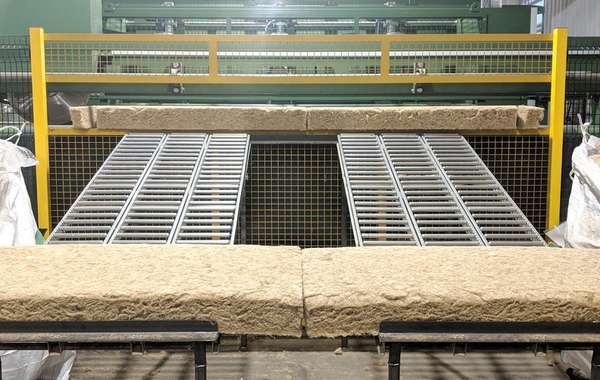
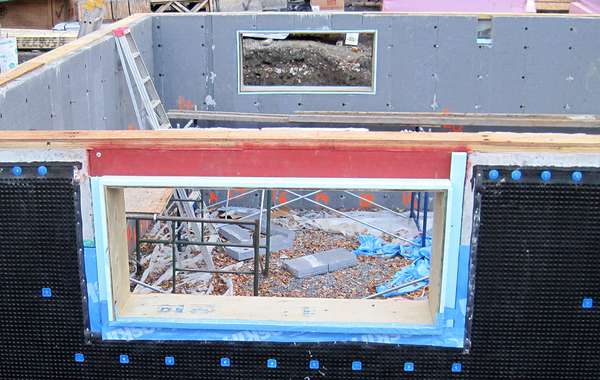
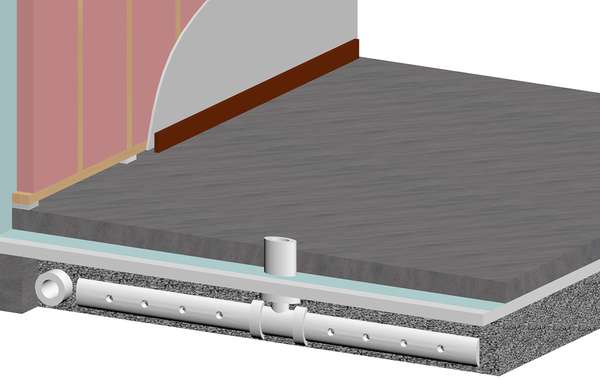
The big advantage of PIR is that it doesn't burn. With EPS or XPS, once it starts burning, the whole thing is going up. Industrial sites are moving away from EPS panels for that reason.
Are fire retardants added to polyiso, and if so do they off-gas? I'm thinking of using it on a roof deck where there is venting at a headwall with windows above.
Yes, all building materials have to have some sort of margin for fire safety, so polyiso would have fire retardants, for good or bad.
矿物木材将没有,它也可能更适合应用于屋顶平台。正如上面所提到的,当天气变冷时,polyiso的性能会下降,因此我们建议它只是一个墙体组件,一个可以保持温暖的组件,因为在它的外部有更多的隔热层。
Thank you for your posts, honesty and integrity. We need helpful information that is true and capable of assisting all of us to be able to build better and safely. Really appreciate it!
@Watt -这是一个关于PIR, EPS和XPS防火性能过于简单的说法。代表EPS行业20多年,我还没听说过这个!我建议一个更科学的参考点,如ICC评估报告,其中包括对预期应用的适当的防火测试。
Wasn't Grenfell Tower clad in PIR (Polyisocyanurate)? That cladding seemed to be burning very well indeed, unfortunately. It looks like the flammable cladding at Grenfell was the main reason that the fire spread so quickly & engulfed the building. It's hard to believe that building industry professionals were paid good money to wrap a tower block in flammable plastic.
Grenfell is still in litigation, but from what I know, it was an improper combination of polyiso and a non-fire-rated ACM panel that was not approved by the code officials. But still allowed to be installed as code officials were not present to catch the error. Whether or not the manufacturers and contractors did this knowingly will be the sticking point of culpability and blame.
Either way, polyiso has been tested in over 100 different configurations for NFPA 285 compliance and can be used with a fire rated core ACM panel.
Here is a testing report from the industry leading polyiso manufacturer if you want further data.
https://www.hunterpanels.com/docman-categories/technical-documents-wall-xci/baw-sheets/baw-2018-cg/1673-concrete-masonry-wall/file
No, polyiso does not burn & is the best fire resistance out of the 3 types. Grenfell cladding does not seem to have an element on each floor to compartmentalize the fire.
Actually, British code creates a 2-hour fire wall on all six sides of each unit, which completely compartmentalizes individual units from its neighbor. This code consideration eliminates the requirement or inclusion of sprinkler systems.
在这种情况下,主要的问题是多iso和非fr核心ACM面板一起使用,这不是一个可接受的组合,根据NFPA285和当地规范。在此基础上,ACM包层被创建来模拟具有大空隙的柱,并创建烟囱效应。即使建筑里有矿物棉它也会像一棵干燥的圣诞树一样亮起来,因为ACM面板的核心设计不当。大火冲进大楼,炸穿了最薄弱的区域,窗户,从外面吞噬了每个单元。
I think you need to do some more reading. Grenfell Tower was clad in PIR & it most definitely burned, despite the predictions of "experts" such as yourself. There may well have been additional problems such as you suggest, but the fact remains that wrapping a concrete tower block in flammable plastic turned a safe (if ugly) building into a death trap. Who in their right mind would fail to see the dangers of wrapping a building in flammable poly-anything? The building industry has blood on it's hands - it collectively let us all down.
And the biggest culprits are folk such as Watt Hertz who blandly assured us that PIR "doesn't burn". People believed them - but it was a lie - it DOES burn.
As a result of that, around 100 people died. Some of them may have died from cyanide poisoning from the gases given off by Polyisocyanurate as it burned. We weren't warned about that by the industry "experts" either, were we?
Shameful.
Here you go - this might help to explain what happened. This is the PIR cladding burning at Grenfell Tower. It's pretty clear that the plastic cladding is burning with great enthusiasm, isn't it?
http://www.bbc.co.uk/news/u...
Hey Mike, I just read thru that article and it says the insulation in the cladding panels was poly-ethylene, not poly-isocyanurate.
Now, I've never been one to take the word of an article found on any website, ever, without checking the sources, but as far as I can tell, its called "Reynobond PE" and the PE stands for poly-ethylene. Quite different.
此外,在格伦费尔火灾中还需要考虑到该产品在高层建筑中的用途。说这对所有项目来说都是一个糟糕的选择,未免言过其实。如果你浏览一下你发布的那篇文章中的图片,就会发现大火是从四楼开始的,但直到几层楼高时才开始严重燃烧。火的本质!
关于使用的材料似乎有矛盾的信息。这篇文章说使用了PIR。
http://www.telegraph.co.uk/...
However other reports say that it was Reynobond PE, but even if that is true, it's surely obvious to anyone that it wasn't a safe material with which to wrap a tower block? I'm not interested in whether it's a good choice for a low rise block, that's irrelevant
I have also seen on TV that the substance used was PIR, though with so much information around it's a a job to remember where we heard what. But one fact is indisputable - it burned ferociously. And it apparently passed all the "tests" that were required.
Anything that begins with "poly" is a plastic, right? And all plastics will burn, though some more readily than others. It's never going to be safe to wrap a tower block in plastic - simple as that. It needs to be as fire resistant as asbestos or concrete, otherwise it simply makes the building a much greater fire risk than it was before, albeit a little prettier - till it catches fire.
Whether the material used was PIR or PE, it was totally inappropriate & caused a small fire to engulf the block. Surely the simple question we need to be asking is this;
“有哪个头脑正常的人会想到,用易燃的塑料包裹混凝土块是一个好主意?”
Never mind whether or not this "good idea" was a good use of millions of pounds of public money!
Mike54321:格伦费尔的内层是PIR,空气间隙是作为防雨屏,外层是聚乙烯线(可回收的苏打水瓶?)夹在铝箔层之间。它的外层燃烧得如此凶猛,空气间隙产生的烟囱效应助长了它。PIR燃烧缓慢,但只有在外层塑料点燃时;在我看到的照片中,它的大部分还在那里。在可能的不利方面,一些幸存者被治疗氰化物中毒,有一些猜测,PIR可能促成了这一点。似乎许多阻燃塑料在被迫燃烧时会释放出一些非常讨厌的东西。
Since Polyisocyanurates and polystyrene come from petroleum, it makes sense that they will burn. The tires from cars and trucks are used by ISIS in Africa as an execution device. ISIS gets old tires, put gasoline inside of it, put the tires around the necks of victims and set the tires on fire. After the gasoline burns away, the tires themselves burn extremely hot, and they poor victims become charcoal.
What has ISIS got to do with the negligence of the so called "building professionals" who recommended that Grenfell Tower would be a better place if it was wrapped in plastic? And then charged the public several million pounds for doing so?
Shouldn't the so called "building professionals" who recommended wrapping Grenfell in plastic have known this? Aren't risk assessments supposed to be carried out?
优秀的信息!问题:我将绝缘内前钉/更衣室我的铝保险杠拉马拖车。你推荐EPS聚苯乙烯吗?还是polyisocyanurate ?我生活在寒冷的气候中,所以保持空间的温暖很重要。我还在想我是否应该用一种建筑粘合剂把保温材料粘在外墙上。
Hi Judi
I wouldn't go with the polyiso since it doesn't work as well when its cold. I'd use EPS, or even XPS. I don't recommend XPS often as you probably read above, but it has a higher R value per inch and you will clearly have limited space and want to insulate it as best as you can in the space you have. And yes, you could attach it with an adhesive, just make sure to choose one that suitable for the application, not all of them are, so read the tube or ask for advice when you're in a building supply store.
And, another option you may want to consider would be spray foam. Demimec has switched blowing agents so it is now far less polluting, and given that it is for a trailer, you may be able to get it done cheaper by taking it to an installer rather than them having to come to you.
I have the same question, but why not using rock wool instead? isn't it better in any way?
Hi Elisa,
这是一个很好的建议,但我认为Rockwool在这种情况下的一个问题是,它很难用粘合剂连接,所以Judy需要想出一些其他的方法来固定它;对于一辆马拉拖车的薄壁来说,这可能很难做到,而且没有螺钉的一端戳出另一边。
We do like Rockwool for a number of reasons (it's made with recycled stone dust, it's not harmed by moisture, etc), but in this case it doesn't seem like the best option. But I like that you thought of that, thanks!
那么石墨聚苯乙烯(GPS)呢?
you state that the board has foil on either side. which way do you install the foil? facing interior or exterior??
Wait... someone just suggested that you may have meant to say . foil is on EACH side
Thanks
Hi Rose,
Yep, I meant to say EACH side! I've gone back and fixed it, thanks :)
It's worth mentioning that Mineral Wool's Global Warming Potential is higher than that of either EPS or Polyiso. It may be a good use of a waste product (slag, glass, ceramic) but its production process is seriously energy-intensive.
你好,萨拉,你说得对,这是值得一提的。谢谢你指出这一点!
下午好,我来自魁北克省蒙特利尔,我们最近征求了一份报价,用于更换一座商业建筑的30000平方英尺的钢甲板屋顶。屋顶工人建议在屋顶上使用2 1/2英寸的ISO隔热材料。不知道这个产品是什么,我研究了它,落在你的网站。我现在很怀疑在屋顶上使用这个产品,因为冬天我们的温度远低于15摄氏度。两家屋顶供应商店都说它是这种类型的屋顶的主要屋顶隔热材料。他们不知道ISO在寒冷环境下的缺陷。由于这种材料将安装在外面的钢甲板上,只有一个蒸汽屏障隔开,我真的怀疑它对蒙特利尔气候的效率??我还担心在冬天的几个月里屋顶的重量(雪、雨和冰)。这将如何影响产品。它会过早地将气体压出吗? What other type of instulation could be used instead of the ISO?
Thanks Gennaro
Hi Gennaro,
Polyisocyanurate on a roof will work as an insulation, just not as well as most people may think. And it isn't a great surprise that an installer hadn't heard that the performance falls off in colder weather since manufacturers present their 'best' results from testing, and in warm conditions it does offer R6-R6.5, so that is laregely the 'accepted' R value of polyiso in the industry.
Some builders that are aware of the performance concerns have begun including a final layer of rockwool on top of the polyiso to keep it warmer so that it continues to offer up around R6 per inch.
As for how much to install, we have come to realize that for the most part, regional building codes are about half what we ourselves would do. So our recommendation would be to find out what is specified in the regional Building Code (which is a bare minimum) and probably double it.
所以多少(?)岩棉你会安装在iso上,以保持/支持其R值在-20F。???1”吗?2”吗?在建筑规范中并没有提到要在Iso ....上安装多少岩棉Thx Z
Hello all. I thought I was confused before, I have less of an idea of what to do now. I have a seasonal home in VT. In winter, the house is unheated. Always find moisture in the basement when we arrive in June. Was going to insulate the basement walls with 2" Polyiso until I read this blog. Can anyone recommend how to insulate a concrete block basement wall to alleviate the moisture problem? The ceiling is uninsulated. Excavating around the perimeter may not be possible due to concrete platforms and stairs around 1/3 or more of the perimeter. It sometimes gets as cold as -20 here and can be below 0 for weeks. What should I do?
Ken, polyiso will absorb less than 0.1% water.
Having the insulation inside the home will maintain it's true R-value. The information provided regarding r-value loss is incredibly incorrect and misleading.
Hi Bobby
这篇文章是基于建立科学社区的发现,我们没有动机提供任何东西,除了准确的信息。你能说同样的话吗?
Given your fierce defense of polyiso and your ability to rhyme off numbers, we are wondering, and please be forthcoming - do you profit in anyway from the sale of polyisocyanurate insulation?
你是否受雇于一家名为Hunter的公司,该公司提供多iso面板?
We look forward to seeing documentation to back up this myriad of claims (independent third party documentation, not from a company you may work for), as well as an honest answer as to any affiliation you may have with the industry that would help us understand why your nose is so far out of joint. Thanks.
我一直在努力评估的外部泡沫绝缘材料(包括高于或低于等级的)的一个因素是昆虫伤害。我们住在温哥华岛,现在的房子在屋顶平台上有泡沫塑料。这层泡沫是木蚁非常理想的家,它们在里面筑巢,然后在房子的其他地方安家。当我们为同样的房产设计新房子时,我真的很难确定哪种泡沫材料或矿棉材料最不可能造成这样的问题。我们将在地下室楼板下面和地下室基础墙外面进行隔热,也可能在地面框架的外面进行隔热。有什么想法、知识或建议吗?Dean
我也住在温哥华岛上,你后来做了什么?Thx Z
Your assertion that polyiso is susceptible to a massive R-value reduction is PATENTLY FALSE in a wall assembly. The study you are referring to is based on MEAN temperature. So, as you state, polyiso will be reduced by 25% to R-4.9/inch (still better than mineral wool, cellulose or fiberglass). That said, in order to get the wall cavity to the temperature required to have this reduction, (which is NOT 50°F, rather closer to 20°F) you would need an interior conditioned space of 70°F and an exterior temp of -30°F!
You really should either revise this post of just remove it completely as it is absolutely incorrect. Not to mention that it has been shown through use of thermal modeling that 2.5" (R-15.9) of Polyiso up to Climate zone 6, will exceed code standards based on U-factor performance. That doesn't sound like low temperatures have anywhere close to the impact you implicate.
I'm enjoying the information! Please keep it comming. & Please describe the wall assembly. Thx Z
One thing I didn't see addressed in your article is the effect of age on R-value. This article says polyisocyanurate loses 75% of its r value in 5 years, and nearly that loss in about two years according to the graph they included. Having decades of experience with our own cold storage warehouse insulated with spray foam polyurethane, this sounds extremely exaggerated and inaccurate. Thoughts?
Hi Sam,
The effect you mention is known as 'thermal drift', and yes it is a real thing, but the drop in R value per inch of polyiso is not even remotely close to that level. That would mean that it was performing at a level under R2 per inch, and there is no evidence to support that at all. The NRCA ( National Roofing Contractor’s Association) recommends calculating the R value of polyisocyanurate insulation at R-5.6 per inch when designing for warm climates and R-5.0 per inch when designing for cold climates.
Thanks Mike for your reply. I either forgot to include the link to the article or your website does not allow it. Just in case I'll post it here again. The graph I referenced is on page 3 of the PDF.
Hi Sam, I did remove the link since we don't allow outbound links to private companies in the comments sections, and, particularly not to pages full of nonsense like that one :)
这家公司生产的步入式冷却器带有某种绝缘材料,所以他们显然想推销自己的产品。乍一看,这是一个非常有说服力的页面,充满了花哨的图表,但信息完全是胡扯。无论是Polyiso还是喷涂聚氨酯,5年后都不会失去75%的绝缘价值,这完全是垃圾。当一家公司做出完全捏造的声明时,就有足够的理由关闭窗口,重新进行调查。
They also spoke about moisture penetration into polyiso insulation killing the R value, but polyiso has a foil membrane on the exterior to keep the gases in and metal is about the most vapor-impermeable membrane you'll find in building products, it is even less permeable to moisture than a 6-mil poly vapor barrier, as you can see ont his page showing agraph of the permeability rating of vapor barriers.
All PolyIso is not foil faced. In roofing they also use fiberglass and organic faced both ared heavely perferated, so off gassing and Permability and much higher. Thx Z
Hi Mike, I could use some guidance on a building situation that we have created. We needed extra storage for our furniture and belongings while embarking on a large house renovation. We have a large old dairy barn. So we built a large “box”/room in the middle of the barn to serve as a storage unit. We used plywood to construct the box, installed 2 windows and conditioned the space with a mini split. Next we installed XPS on the interior walls. Our plan was to leave the walls as is after this. However, after doing some research and reading on this site, I am now concerned with the off gassing that is occurring. Fortunately, we are not living in the space but I am concerned about our furniture absorbing the off gassed chemicals. The room is supposed to be “temporary” so we did not plan on putting drywall up. I was considering covering the XPS with plastic but did not want to cause a moisture issue. Do you have any suggestions? Thanks!
Hi Belinda, you have nothing at all to worry about. Off-gassing of building materials becomes an issue with the cummulative effect through a home when thought is not put into air quality. In such a case, it can turn into a toxic stew of formaldehyde and tons of other chemicals from sealants and adhesives, paints, floors finishes, cabinetry, countertops, and yes, sometimes insulation. But I persoanally would have no concern whatsover storing furniture in a room insulated with XPS. The off-gasing is the release from materials into the air, which no doubt wil be changed regularly. Rest easy, your belongings are fine!
Thanks Mike! I appreciate your opinion on the matter. My husband also sends his appreciation especially since now he doesn’t have to remove the insulation!
Hey Mike thanks for putting this article together, Great info. I do have a question for you. Im converting a large van into and adventure rig to explore North America and beyond and im looking to insulate. Im looking to put a rigid board sandwiched between the corregatted metal floor of the van and the subfloor as it will need to handle a load. Ill be doing my best to keep a vapour barrier intact. Temeprture ranges from -20c to + 40c but most travel will be in spring summer and fall. I Will have a hydronic dry air furnace on cold nights and will have plenty of ventilzation in the heat. Any recommendations for this application? the walls and roof i have more flexibilty in what prodiucts i could use. Thanks again. cheers
Very good article, well put together and many interesting points! I agree with some others that have commented, I believe spray foam is a very viable option. It has some of the highest R-value out there, it lasts a long time, it's eco-friendly, and it can create a vapour barrier!
Hey Mike Great article I learned a lot but still not sure which product to use. My project is a small scale dehydration lumber kiln, max operating temp 160 deg. It is 2x4 construction with one 2" layer of foam board between the studs and another 2" foam board attached to the studs on the inside. It is then covered with 6 mil plastic and 1/2" cdx plywood and all joints taped and sealed and interior painted with alminum roof coating. Every attempt is made to keep water infiltration out or to a minimum however in a kiln moisture will eventually get into the walls. The two options I'm looking at are the Foil faced EPS or the Polyiso. Before researching the differences I purchased The EPS and am now having second thoughts. I could use this on another project if I had to but because of the price would really like to use it on the Kiln. My main concern is temperature will EPS have a problem at 160 deg.? Will the EPS become water logged over time? Other forums that deal with Kilns recommend using the Polyiso, but after reading your article if temp. is not a problem I'm thinking the ESP should work just fine. Hope I'm right but I have been wrong once before in my life.
Hi Wayne.
I'm not 100% clear on your wall assembly but don't need to be, I think I can still help you choose -
The foil would for sure be a perfect vapor barrier, but polyiso isn't the best for handling moisture. Mineral wool /Rockwool is completely unharmed by moisture, so in situations where there may be water or humidity concerns it can be a good failsafe choice. Foil is great, but a taped poly membrane would do the exact same thing. That way you could do Rockwool and have the vapor barrier like with the foil. And since mineral wool is a stone dust (and fireproof), high temperatures aren't a problem. And yes, when exposed to a lot of moisture or even bulk water, EPS can become saturated. Hope that helps!
Thanks for the excellent article.
I learned a lot... . Much appreciated.
2 questions I have -
如果PIR r值在低温下下降30%,它是否仍然在r值上匹配或超过它的竞争?
30% of 6 =1.8
So remainy r value = 4.2
A little higher for 6.5 foam.
只是想知道。
Second, I have been driven nuts by the itchy feeling from every insulation I've installed other than the blue recycle denim/cotton stuff.
Are either xps or eps irritant free? I have not tried them yet.
Thanks
你能对哪种绝缘产品最适合绝缘,例如,一个有潜在泄漏的金属结构....给出任何评论吗那是野营车吗?关于给野营车隔热的最佳方法,有很多困惑和争论。争论的项目包括使用蒸汽屏障,是使用羊毛这样的防潮保温材料,还是使用疏水保温材料(如Thinsulate),还是使用旨在阻止湿气通过的材料(如刚性泡沫板)。polyiso)。如果能得到一些专业的意见就太好了!
Hello.
谢谢你有趣的阅读。我第一次听说PIR板在低温下的绝缘性能损失。非常有用的信息。在这一段中,您提到了芝加哥12月的一项研究,并请我们“参阅下文”。你能给我介绍一下这个研究吗?
Thank You in advance
Cheers Maciej
was that not debunked further up in this thread?
Hi ! Enjoyed your article but now more confused on what insulation would be best for my home. I have an 1820 farmhouse and am renovating the bedroom first floor ceiling. We took down the drop ceiling and want to refinish the ceiling and expose the beams. What type insulation is good for low off gassing and sound proofing and R value? The 2nd floor above is not heated. We were thinking using rigid insulation and then cover with Armstrong wood planks leaving beams exposed. We are concerned with VOCs, want to be green as possible and have good fire retardant and moisture prevention. Can you help with our insulation choice? Rigid would be easiest to install. Thanks!
Dawn
check out Rockboard 40/60, 60 & 80
嗨,感谢这篇很棒的文章。我有一个独立的车库,它是由波纹金属覆盖的。金属有很多表面和渗透,所以完全不像传统的房子外观那样潮湿或密封。我认为我将使用1"的刚性泡沫绝缘外面对的螺柱腔侧,以创建一个空气屏障和蒸汽缓速器。(我用岩棉填充剩下的空腔以消音)这是一个商店,所以它不需要像房子一样隔热;相反,我希望在夏天湿热、冬天凉爽的维吉工作时“放松一下”。还能给邻居消音。在这种情况下,faces EPS产品会比XPS更好吗?